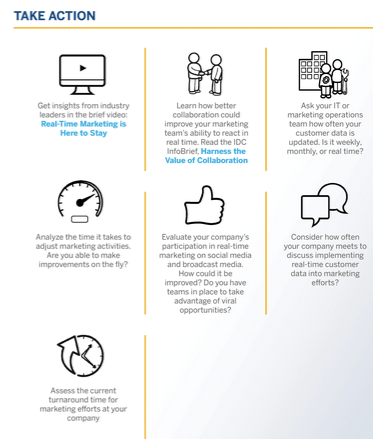Zeno of Citium was a Greek philosopher who famously observed, “We have two ears and one mouth, so we should listen more than we say.” This timeless advice applies to many business organizations today that would like real-time insights into their customers. Just like in any good interpersonal relationship, the key to understanding customer insights is to listen for and monitor customer signals that reveal customer intent and motivations.
Explicit Versus Implicit Data
Most organizations have access to transactional customer information that I consider “explicit” in nature. The explicit data are distinct transactional data types such as sent e-mails, opt-in/outs, orders, payments, and returns. This information provides provides valuable customer information that helps to develop customer profiles. It also informs you about something that the customer has done in the past. This data doesn’t, however, provide much insight into what customers are planning to do in the future.
There are data sources that are more “implicit” in nature as well. This information provides insights into customer intent, motivations, and desires. The implicit data also provides insights into the customer’s current state (rather than past behavior), which is extremely valuable in enabling marketers to capitalize on real-time marketing.
Examples of “implicit” data sources are social media sites, community sites, and online behavioral information, such as search terms and external sites visited. Many of the implicit data sources may reside outside of your organization. There is a wealth of data, however, that can be mined internally: behavior on the company commerce site, specific pages seen, forms completed, time spent hovering certain content, items that weren’t clicked, and so on. There are other sources that are more unstructured such as e-mails from customers and customer service Web forms, where analytics can be used to evaluate these texts to identify keywords and sentiment. Even the call center customer recordings can easily be converted into plain text so that text analytics can determine the nature of the phone interactions and the caller’s sentiments.
New Technology Enabling Deeper Insights
There are interesting examples of organizations leveraging new technologies such as wearables and the Internet of Things (IoT) to capture new types of customer data to gain real-time insights. According to research, Advanced Practices Council found innovative organizations leveraging real-time data streams to provide real-time insights on customers.
Disney deploys MagicBands, wireless-tracking wristbands, in its parks and resorts to collect visitor streaming data such as real-time location, purchase history, profiles, and riding patterns for popular attractions.
Coca-Cola’s sensor-enabled Freestyle fountain drink dispenser gathers and reports consumption data, and its proprietary algorithm enables it to standardize the taste of its Minute Maid orange juices by matching consumer preferences with streaming data on the attributes of each batch of raw juice.
Gain Real-Time Customer Insights
Identifying and leveraging real-time customer insights is a journey in itself. It can be an iterative process. Take these steps to start your journey in gaining real-time customer insights:
- Understand the customer activities and signals that may be strong indicators for certain customer behaviors. For example, the creation of a shopping cart but no purchase. This is a strong indication that the customer is interested in purchasing the items in the cart. Keep in mind that these signals may be found in both internal as well as external channels.
- Partner with your IT counterparts to evaluate these data sources to see if it is possible to systematically identify and consolidate these signals (system events) into a single customer data source.
- Leverage discovery and analytical tools to evaluate these customer signals and behaviors for the opportunity to better engage with customers.
- Once opportunities are found, use a real-time recommendation engine that leverages historical data, propensity scores, and real-time context to make the best customer treatments.
Real-Time Insights Enable Individualized Marketing
Think outside of the box to leverage innovative techniques to monitor and listen to customers and leverage real-time insights to deliver personalized and relevant customer experiences. These sources of implicit customer data are like gold nuggets of customer insights that reveal their intentions and motivations, allowing marketers to better understand customer needs and to engage their customers with relevant messages and treatment.


